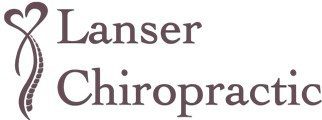
There are 10 million new cases every year of otitis media, aka your common-or-garden ear infection. It is so common, in fact, that ear infections account for 35% of all pediatric visits, making them the number one reason for visiting the pediatrician and the most recorded illness in babies and young children. If you’ve ever seen a child with an ear infection, you’ll know how excruciating the pain is.
Nearly 50% of all children will suffer at least one middle ear infection in their first 12 months. By age 3, that figure soars to around two-thirds. The causes of otitis media are bacterial or viral, and are often a by-product of another illness, such as a cold. Many children end up suffering on a chronic basis, and are in and out of the doctor’s office for years. Ultimately, such repeated insults can lead to permanent hearing damage, with all the related speech and developmental problems that accompany it.
The usual course of action is to prescribe antibiotics, in case the cause is bacterial rather than viral. Of course, a viral infection will not be touched by this medication. Moreover, research shows that even in the case of a bacterial infection, pills are not much better at dealing with the problem than the body’s immune system. And much has been made in recent years of the problem of over-prescribing antibiotics, which has led to a drug-resistant bacteria that medicine as yet has no answer to.
Ear infections are the second most common reason for surgery in children under 2 years of age. Actually, they are the primary cause of surgery for medical reasons in this age group, because the most common surgery is circumcision. When the problem is serious enough to create a hearing deficit, specialists sometimes implant “ear tubes” in procedures known as myringotomy and tympanostomy. This involves piercing the eardrum and inserting a tube to help reduce the pressure inside and allow fluid to drain. Usually, the tube is naturally discarded after a few months and the hole closes up, but the procedure still needs to be repeated in 20 to 30% of cases. That’s more general anesthetic, which is no small event for a young child. If problems still persist, an adenoidectomy may be performed to remove the adenoids.
Chiropractic Care Can Help
Worried by all this drug and invasive treatment, which may anyway prove ineffective, more parents are looking at chiropractic as a source of relief for their children. Research has been published in childrearing magazines such as Parenting and Baby Talk showing that 80% of children treated by chiropractic for ear infections remained free of the complaint for at least the following six months (where maintenance visits every four to six weeks were administered).
It may be hard for some people to link chiropractic to the ears when most people just think of spinal adjustments, but it is these spinal adjustments that trigger improvement in those areas related to the spine, which covers … well, the entire body. Chiropractic mobilizes drainage of the ear, and this natural response causes the body to create the antibodies necessary to help beat the infections.
Specifically, it is the manipulation of the upper-cervical spine that helps children with otitis media, namely the occiput (back of the skull), and atlas (first neck vertebra). Adjusting the occiput allows the middle ear to drain, and between six and eight treatments would be typical to help resolve the problem and trigger the child’s system into developing the tools necessary to carry on the fight unaided.
If you have concerns about recurrent bouts of ear infection in your child, talk to your doctor of chiropractic. Chiropractors are licensed and trained to diagnose and treat patients of all ages, and will adjust treatments accordingly.
For Your Health,
Dr. Wendy Lanser, DC
